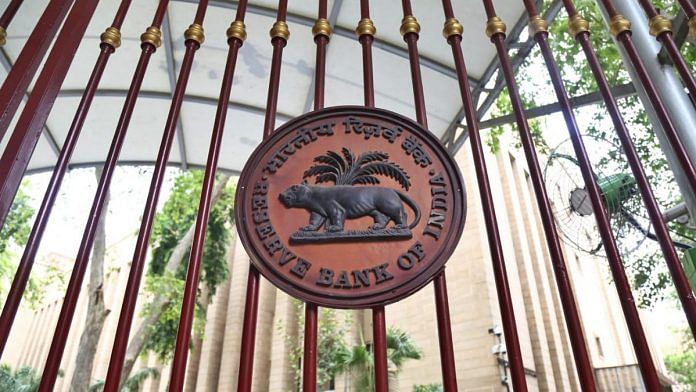New Delhi: The share of bad debt in the Indian banking system could increase to as much as 14.7 per cent by March 2021 if the macroeconomic environment worsens further, the Reserve Bank of India (RBI) said Friday in its financial stability report.
The gross non-performing assets (NPAs) for all banks together was at 8.5 per cent as of March 2020.
This is expected to increase to 12.5 per cent by March 2021 under the baseline scenario, and may escalate to 14.7 per cent under a “very severely stressed” scenario, the RBI added.
The RBI conducts stress tests on the resilience of the Indian banking system in the face of macroeconomic shocks under a baseline and three adverse — medium, severe and very severe — scenarios. The macroeconomic variables considered include GDP growth, combined gross fiscal deficit and inflation.
According to the report, the worst hit will be state-owned banks, which could see their gross NPA ratio increase to 15.2 per cent by March 2020 from 11.3 per cent by March 2021. The gross NPAs of private banks were forecast to increase to 7.3 per cent from 4.2 per cent under the baseline scenario.
“Given the fact that the impact of moratorium is still uncertain and evolving, the exact nature of how the same will play out on the quality of banking assets is difficult to ascertain accurately. Therefore, this will only be ascertainable with passage of time…,” the RBI said.
With the Covid-19 pandemic and the subsequent lockdown bringing all economic activity to a complete halt, the RBI had announced a three-month loan moratorium for all term loans, besides easing norms around working capital requirements of firms until 31 May.
With the lockdown lasting until May, the central bank had further extended the moratorium until 31 August.
Also Read: Higher inflation doesn’t mean RBI’s Monetary Policy Committee should increase interest rates
‘Financial system remains stable’
The financial stability report said capital adequacy ratios of banks — the minimum capital regulatory requirements that banks have to maintain — are also expected to fall to 13.3 per cent by March 2021 from 14.6 per cent.
“While the regulatory moratorium may be holding back some stress, the industry-wise composition of good quality loans (i.e., standard advances) of public sector banks and private banks reveals that some of the industries with higher share of such loans across bank groups are severely affected by the Covid-19 crisis,” the RBI said.
RBI governor Shaktikanta Das had said earlier this month that the central bank had asked banks to conduct stress tests to assess the impact of the pandemic on their asset quality, profitability and capital adequacy and raise capital over and above the regulatory requirements.
Presenting an overall assessment of the financial system, the report said the financial system “remains stable, notwithstanding the significant downside risk to economic prospects”. Among the macroeconomic risks, those to domestic growth and fiscal housekeeping were perceived to be “very high”, the RBI said.
Also Read: Modi govt move to ‘dilute’ bankruptcy law led to our rift, RBI ex-governor Urjit Patel says



